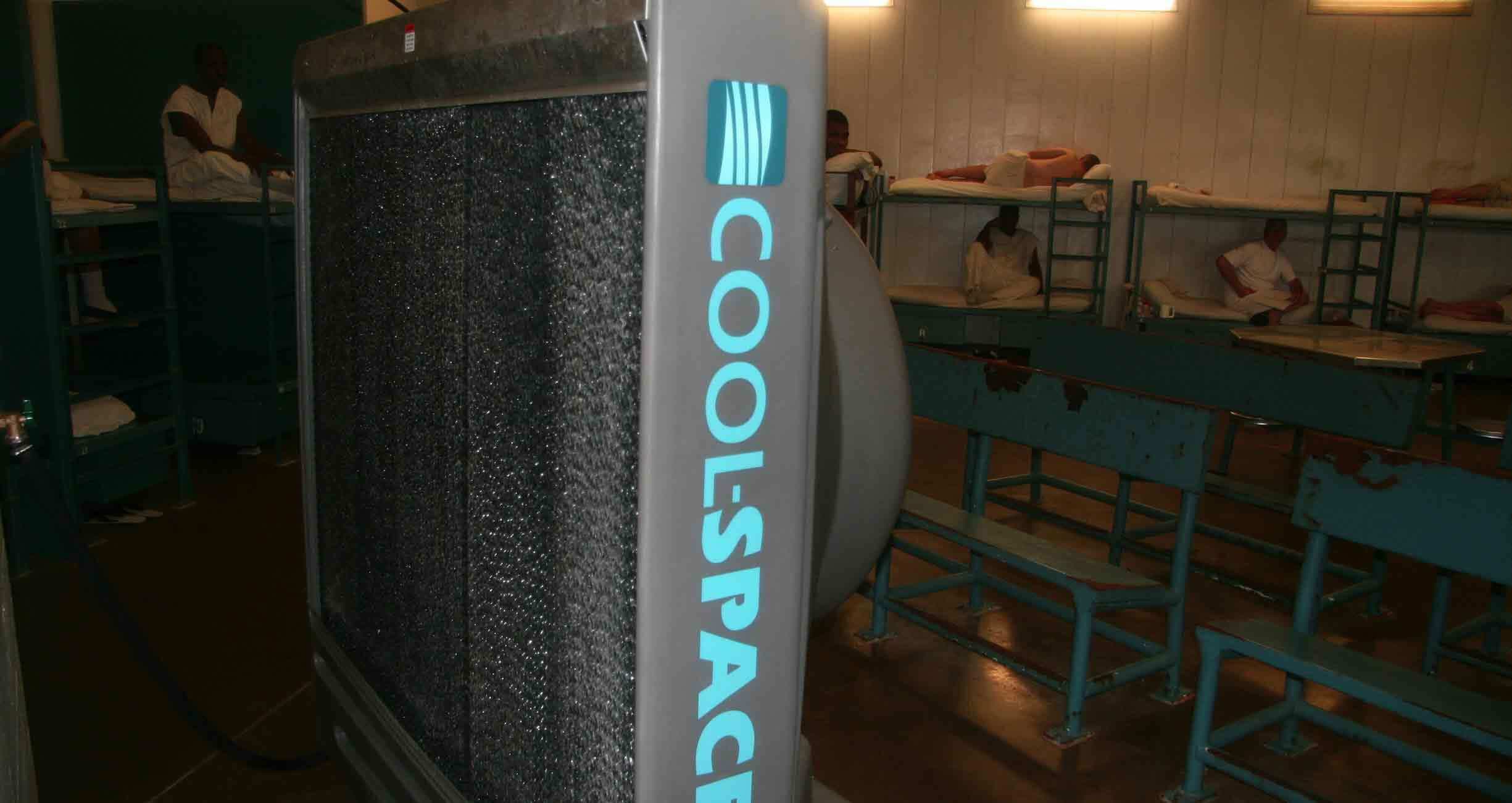Prison Is Already Hell, and Climate Change Is Making It Worse

In Texas prisons that lack air conditioning, temperatures routinely exceed triple digits. Outdoor temperature logs reveal heat indexes surpassing 149 degrees, which can cause heat exhaustion and heat stroke. And within the concrete and metal structures, conditions are often even more dire.
So brutal, in fact, that one 2014 report determined that the Texas Department of Criminal Justice (TDCJ) was “violating the human and constitutional rights” of people in prison and corrections officers by subjecting them to “cruel, inhuman, and degrading treatment.” About four in five of the roughly 150,000 people held in Texas prisons in 2017 had no access to air conditioning in their cells—and no respite from the sweltering heat.
It’s been this way for decades. Then, last spring, it looked like there might be a win on the horizon. After years of advocacy by organizations including Texas Prisons Community Advocates (TPCA), the Texas House passed a bill that would expand air conditioning in prisons. But the bill died in the Senate, and a later attempt to use American Rescue Plan Act funding to install air conditioning with air purification technology to reduce the spread of viruses within facilities also faltered (meanwhile, Texas led the nation in COVID-19 deaths in prisons).
“They simply don’t give a damn,” said Amite Dominick, president of TPCA, who led efforts to push the bills through the legislature.
The negligence is senseless. Texas has wasted millions in taxpayer dollars fighting lawsuits over installing air conditioning—money that could have been spent actually installing it. TDCJ, in one case, estimated it would cost $4 million to install air conditioning at the Wallace Pack Unit, located 70 miles outside of Houston, after the department spent more than $7 million fighting a lawsuit brought forward by people incarcerated at the unit.
“It’s not that [departments of corrections] don’t have the money. It is about what they’re doing with that money,” said Clinique Chapman, associate director of Vera and MILPA's Restoring Promise initiative, which works to improve prison culture and conditions nationwide. “These systems don’t actually see that they are accountable for doing anything more than warehousing people.”
It’s the only explanation for the state’s ongoing reluctance to address the acute and quite literally suffocating conditions that people incarcerated in one of its roughly 70 prisons without full air conditioning must tolerate.
“They’re flooding their toilets so that they can get water on the floor and lay down on the floor so they can cool down,” Dominick said. That’s not allowed, she added, so if they’re written up, it can negatively impact their chances of parole.
Texas is not alone in forcing people to endure extreme heat in prisons. Many states, including most states in the South, lack universal air conditioning in prisons. Reports dating back decades demonstrate that incarcerated people and staff in California, Florida, Louisiana, Michigan, and elsewhere have been trying to get departments of corrections to address the issue. Now, as global temperatures rise, climate projections only look worse, as places unaccustomed to hot, humid weather will experience severe temperatures more frequently.
Take, for example, the blistering heat dome that engulfed the Pacific Northwest last summer. When temperatures in Oregon reached 117 degrees, people in its state prisons—some of which lack functioning central air—had few options to cool down and even lacked drinking water. At Washington State Penitentiary, dozens of people spent 23 hours a day locked in their cells in the Hole, the prison’s solitary confinement unit, even as the air conditioning stopped working and temperatures soared.
Prisons were unprepared then, and little has been done since (Washington’s Office of the Corrections Ombuds released a report with recommendations that have largely been neglected). Meanwhile, as another record-breaking summer carries on, the high temperatures are especially dangerous for incarcerated people who may be older, have preexisting medical conditions like asthma or diabetes, or whose health has been impacted by COVID-19 (which has raged behind bars). Certain medications—like psychotropics, which treat some mental health conditions—have side effects that can also make people ill in high heat.
Lance Lowry, former head of a Texas corrections officers’ union, told the Marshall Project that the number of attempted suicides among incarcerated people increases over the summer. So, too, does violence, which compounds the dangerous conditions already created by the heat, for both incarcerated people and corrections officers.
Of course, the climate crisis also brings with it flooding, wildfires, and freezing temperatures, all of which threaten people held in woefully unprepared prisons, jails, and detention facilities.
Local, state, and federal policymakers need to take action and invest resources in keeping people held behind bars and those who work in facilities safe. And beyond this, states can and should permanently reduce the number of people they incarcerate. The best way to ensure that people behind bars are not exposed to the dangers of extreme heat is to stop confining them in these facilities. The United States keeps too many people incarcerated for too long, and this system is costly—morally, socially, and economically—and counterproductive to public safety.
Until that happens, Dominick is doing what she can, like collecting donations for cooling towels to send to people incarcerated in Texas prisons. She’s doing what state officials in Texas aren’t.
“I’m trying to help, at least a little bit.”
